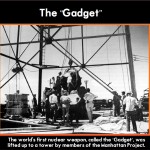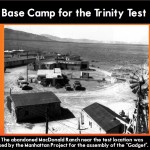The nuclear bombing of Hiroshima and Nagasaki greatly contributed to the United States’ victory in World War II. What also contributed to America’s victory was a test that occurred that month before the bombing of Japan. The Trinity Test, the detonation of the world’s first nuclear weapon, paved the way for the creation and success of the two nuclear bombs dropped on Japan and for future nuclear weapons testing. But the important factor for the success of the Trinity Test was the location where the test took place. Finding the proper test location was important for the people conducting the test for the quality and success of the test and for the US’s overall victory against the Japanese.
The Manhattan Project, a group of scientists and military professionals who conducting in the research and development of nuclear weapons, wanted to ensure the quality and safety of the Trinity Test. The team took many precautions for the selection of the test location.
The location the Manhattan Project desired to meet certain requirements for the test location, like its “availability, distance from Los Alamos (the headquarters for the Manhattan Project), good weather, few or no settlements, and that no Indian land would be used.”
Despite considering test locations in California, Colorado, and Texas, it was decided that the Trinity Test would be conducted in New Mexico, at the then-called Alamogordo Bombing and Gunnery Range. The range was located in a desert called the Jornada del Muerto.
This location ensured the quality of test as it was controlled by the military, had good weather to prevent the possible spread of fallout during the test, and was about 200 miles from the Manhattan Project Headquarters in Los Alamos, NM.
——
References
(2) U.S. Department of Energy. “Trinity Site”. Trinity Atomic Website. 2005.
(3) Atomic Archive
Photo References



